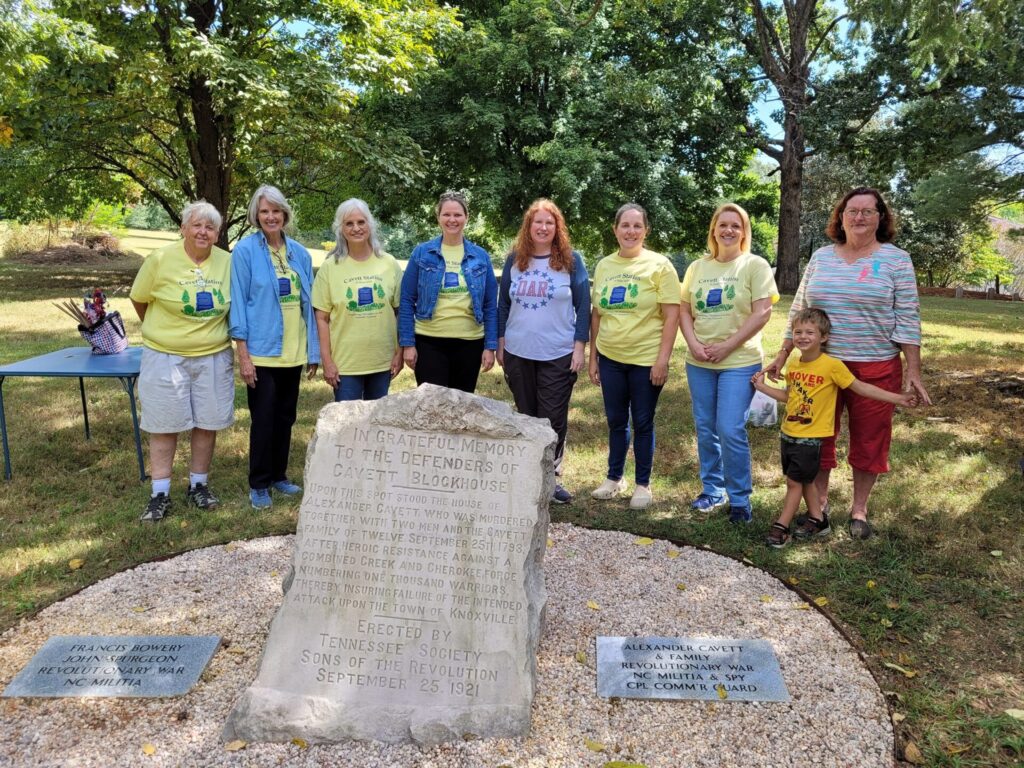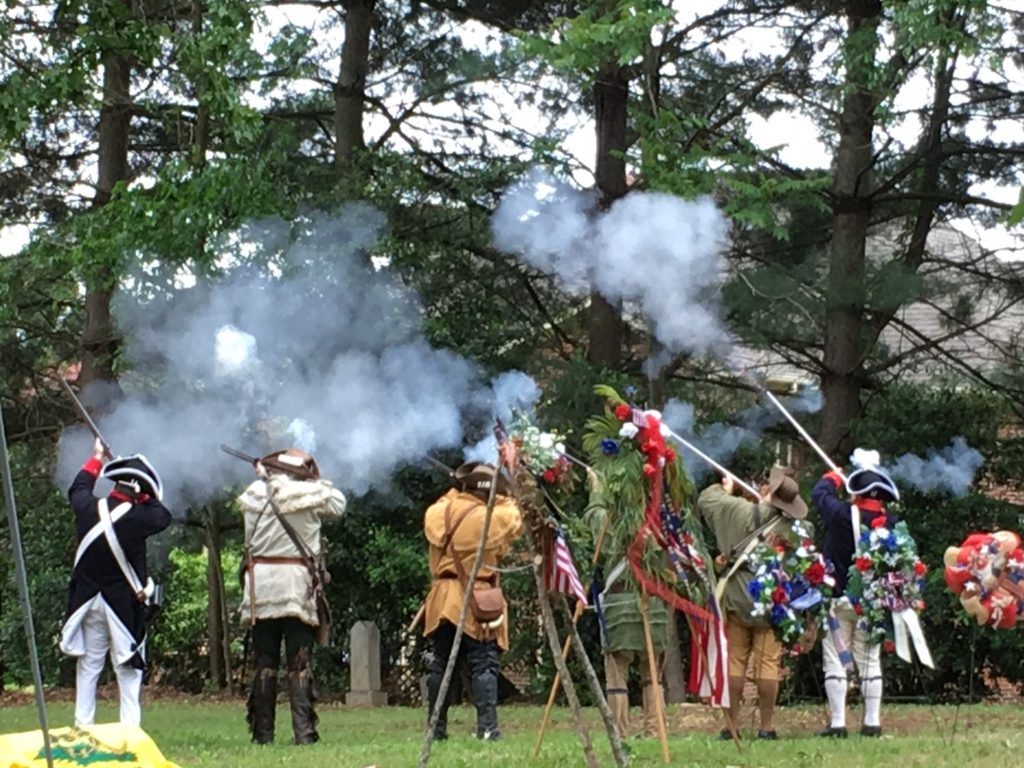Cavett’s Station
In September 1793, a seemingly ordinary day ended in savage bloodshed, leaving 13 men, women and children dead. The tragic event occurred at Cavett’s Station, one of a series of small forts, or fortified homesteads, that existed throughout the Tennessee Frontier, this one being owned by Alexander Cavett. Similar forts located in the area include James White’s Fort in downtown Knoxville and Campbell’s Station at what we now call Farragut. The exact spot where the Cavett fort was sited has so far been lost to history; it was burned to the ground by angry Native American warriors. However, certainly the fort was located near Mars Hill Cemetery, just a short drive from Kingston Pike on the edge of West Hills.
In retaliation for deaths and ongoing tensions from land disputes related to the 1791 Treaty of Holston, a party of perhaps up to one thousand warriors, comprised of Chickamauga Cherokees (a splinter group from the generally peaceful Cherokee) and Creeks, headed towards Knoxville, intent on destroying the fledgling river town. The war party’s advance was interrupted by the “Invincible 38,” a group of non-career soldiers led by General James White. The “38” comprised virtually all of the men living in Knoxville at that time who held a position on a ridge off Western Avenue. Two older men were left to guard the barracks on Main Street (now the site of the Old Courthouse) where they sounded the cannons in an attempt to ward off the Indian threat. If the Indians reached Knoxville, the old men were left to lead a last stand. It is possible that the Indian warriors mistook the Invincible 38 for the leading front of a larger army and chose to retreat.
The events that day have become known as the Cavett’s Station Massacre.
Located off Broome Road in West Hills, the Cavett’s Station site encompasses Mars Hill Cemetery and a large field where ongoing archeological research aims to discover unmarked graves. A stone monument, erected in 1921, marks this important chapter in East Tennessee history. Charles H. Faulkner, professor emeritus in the Department of Anthropology and Distinguished Professor of Humanities at UT’s book, “Massacre at Cavett’s Station: Frontier Tennessee during the Cherokee Wars” (University of Tennessee Press, 2013) offers the most definitive account of the massacre as well as an in-depth background study on this and numerous other related conflicts. Faulkner himself has studied the site intently during the past 40 years.
Thanks the to efforts of Friends of Cavett Station, much more is known today about the Cavett family and those connected with their story. Join Friends of Cavett Station on Facebook.
***
On Saturday, September 23, 2023, Friends of Cavett Station (a group dedicated to the preservation, maintenance, and perpetual care of the Historic Mars Hill Cemetery at Historic Cavett Station), and local members of Daughters of the Revolution, commemorated the 230th anniversary of the massacre with a small, poignant, event at Mars Cemetery.

Cindy Johnson, Friends of Cavett Station, at the 230th anniversary of the Cavett Station Massacre on Sept. 23, 2023.
Cindy Johnson, longstanding member of the Friends group, and historian and genealogist Amy Mays Emert both spoke about the lives of Alexander Cavett, his family, and his colleagues, Francis Bowery, and John Spurgeon, who all lost their lives that day.
***
 Amy Mays Emert has now published a new book about all of the people buried in Mars cemetery. Mars Hill Cemetery at Historic Cavett’s Station: Biographies and Stories of the Men, Women, and Children Interred in Mars Hill Cemetery.
Amy Mays Emert has now published a new book about all of the people buried in Mars cemetery. Mars Hill Cemetery at Historic Cavett’s Station: Biographies and Stories of the Men, Women, and Children Interred in Mars Hill Cemetery.
The 407-page book featuring 300+ illustrations is now available in the gift shop at the East Tennessee History Center and Amazon. Signed copies can also be obtained directly from the author.
If you would like to obtain a signed copy or contact the author, please email KHP at contact@knoxhistoryproject.org .

Friends of Cavett Station, September 23, 2023.







